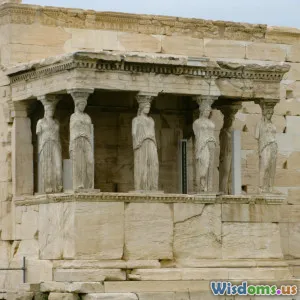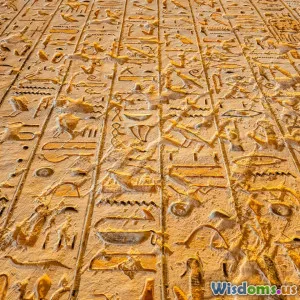
Explore the Influence of Indian Temple Architecture on Modern Design
8 min read Discover how Indian temple architecture inspires modern design, blending ancient artistry with contemporary innovation. (0 Reviews)
Unveiling the Timeless Influence of Indian Temple Architecture on Modern Design
Indian temple architecture, with its centuries-old art, religious symbolism, and structural innovation, continues to captivate architects and designers worldwide. While rooted deeply in spiritual devotion, these ancient structures offer a rich repository of design elements that modern creators adapt and reinterpret for today's built environments.
Introduction
From the ornate gopurams towering over South Indian temple complexes to the harmonious mandapas embedded in sacred precincts, the architectural styles developed in India are masterpieces of cultural expression and engineering ingenuity. What sets Indian temple architecture apart is its blend of aesthetic beauty with philosophic symbolism—a fusion that extends beyond religion into the secular spaces pioneered by modern designers. This article delves deep into how the magnificence and principles of Indian temple structures exert a powerful influence in contemporary design realms, transforming urban landscapes, interior aesthetics, and sustainable architecture.
The Essence of Indian Temple Architecture
Historical Overview
Indian temple design spans multiple styles, predominantly the Nagara (North Indian), Dravidian (South Indian), and Vesara (Deccan) traditions, each recognized by distinct features such as shikharas (spires), intricate carvings, and elaborated halls. Temples such as the Brihadeeswara Temple in Tamil Nadu, Konark Sun Temple in Odisha, and Khajuraho Group of Monuments in Madhya Pradesh are emblematic.
Architectural Principles
Key to temple architecture are geometric precision and vastu shastra—the ancient science of spatial arrangement. Temples are designed like cosmic diagrams, representing the universe in microcosm. The detailed iconography and carvings narrate mythologies and philosophical concepts, fostering a sense of harmony and enlightenment.
Embedding Symbolism in Modern Architecture
Application in Contemporary Design
Modern architects and interior designers increasingly incorporate symbolic motifs and geometries from temple architecture to infuse spaces with meaning and cultural depth. For example, the Lotus Temple in Delhi embraces the sacred lotus form, a recurring motif in temples, to foster peace and spiritual connectivity.
Renowned architect Charles Correa incorporated traditional vastu principles in his urban designs and public spaces, emphasizing orientation and cosmic alignment much like temple layouts. Similarly, Indian-themed hotels and cultural centers integrate mandala patterns and perforated stone screens (jalis) as functional art, balancing light and ventilation.
Case Study: The Indian Institute of Management, Ahmedabad
Architect Louis Kahn, while not Indian, drew inspiration from local traditions and vernacular architecture elements, many echoing temple concepts such as colonnades, courtyards, and monumental entrances. The IIM Ahmedabad campus is celebrated as a fusion of modernism with regional architectural vocabulary.
Intricacy and Ornamentation Inspiring Modern Aesthetics
From Carvings to Contemporary Materiality
The intricate carvings that adorn temples, telling tales of gods, nature, and celestial order, influence modern decorative arts and façade treatments. Contemporary architects experiment with laser-cut panels and 3D-printed motifs inspired by temple stonework, creating a dialogue between craftsmanship and technology.
For instance, the facade of the Mahindra & Mahindra headquarters in Mumbai features a stylized interpretation of temple lattice work, adding texture and cultural context to an otherwise modernist massing.
Interior Spaces: Creating Sacred Ambiances
In interior design, temple-inspired elements such as the use of natural stone, wood carvings, and mural formations convey tranquility and rootedness. Meditation centers and wellness spas incorporate these features to enhance the spiritual environment, crafting spaces that transcend pure functionality.
Indian Temple Architecture and Sustainable Design
Natural Ventilation and Climate Sensitivity
Temples often implement passive cooling techniques such as jalis and step wells, guiding airflow and mitigating heat in a pre-electricity age. Modern sustainable architecture studies these age-old principles to develop eco-friendly buildings minimizing energy use.
The Infosys Pyramid Tower in Hyderabad adopts solar orientation and ventilation strategies derived from local temple traditions. This reflects a growing awareness that ancient architecture offers vital solutions to contemporary environmental challenges.
Material Sustainability
Traditional temples used locally sourced stones and lime plaster, emphasizing durability and minimal ecological impact. Modern eco-conscious designers revisit these materials and methods to enhance sustainability without compromising aesthetics.
Cultural Identity and Emotional Connectivity
The integration of Indian temple architectural elements in modern design revitalizes cultural narratives and fosters belonging, especially in diaspora communities. Temples outside India inspire cultural centers that become hubs for preservation and celebration, influencing public building designs that reflect Indian heritage.
Conclusion
Indian temple architecture is far more than religious structures; it is a profound source of inspiration that modern designers reimagine across urban landscapes, interiors, and sustainable builds. Its symbolic depth, artful intricacies, and climatic responsiveness offer a blueprint that revitalizes contemporary design with cultural resonance and ecological awareness. As we look forward, the fusion of these ancient traditions with modern innovation promises architectures that are not only visually stunning but spiritually and environmentally meaningful.
Embarking on this dialogue between epochs can inspire architects, designers, and cultural historians alike to create spaces that honor the past while constructing the future—bridging humanity’s enduring search for beauty, harmony, and purpose in the built world.
“Architecture is the learned game, correct and magnificent, of forms assembled in the light.” – Le Corbusier, echoing even in the sacred stones of Indian temples.
References and Further Reading
- Michell, George. The Hindu Temple: An Introduction to Its Meaning and Forms. Chicago: University of Chicago Press, 1988.
- Lesser, WA. Vastu Architecture: Design Theory and Application for Everyday Life. New Delhi: Roli Books, 2000.
- Louis Kahn: The Power of Architecture. Museum of Modern Art, Exhibition Catalog, 2003.
- Gupta, Shubhra. “Ancient Indian Urbanism and Sustainability.” Journal of Architectural Research, vol. 30, no. 2, 2019.
- Case studies and architectural analyses from the Indian Institute of Management Ahmedabad and Infosys Hyderabad corporate campuses.
Rate the Post
User Reviews
Popular Posts




















